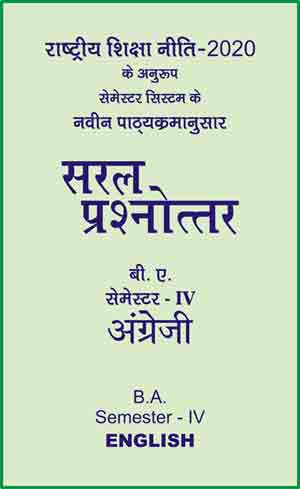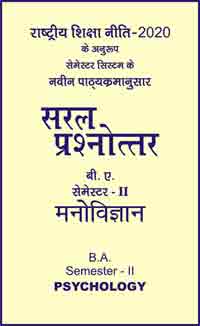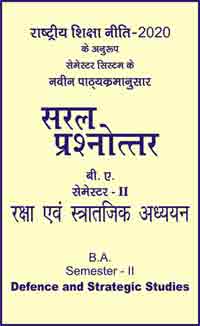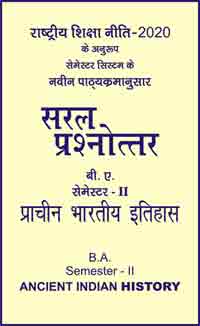|
बी ए - एम ए >> बीए सेमेस्टर-4 अंग्रेजी बीए सेमेस्टर-4 अंग्रेजीसरल प्रश्नोत्तर समूह
|
5 पाठक हैं |
|||||||
बीए सेमेस्टर-4 अंग्रेजी - सरल प्रश्नोत्तर
Important Facts to Remember
Kanyadaan depicts the problem of untouchability in the Indian society and the violence and disillusionment of the Indian youth. Vijay Tendulkar's other plays such as Silence! The Court is in Session, The Vultures and Ghashiram Kotwal dealt with the theme of violence. He also handled in his plays the subjects such as the complex relationship between man and woman, cruelty and wildness of man and his alienation in the modern world. He tried to focus the real nature of man and his hypocrisy. Vijay Tendulkar has focused on the contemporary social problems associated with domestic violence between the spouses. He mostly concentrated on violence as one of the major themes of his plays. Vijay Tendulkar is particularly interested in showing the domestic violence of spouses, which is generated out of the class differences of spouses. It means Social disparity of spouses is responsible for the violence in the family. Kanyadaan reflects the social disparity in the Indian society. In Indian society, the caste system is a typical traditional social system and supposed to be the blot on the Hindu society. The history of the origin and development of caste system in Hindu society has a long tradition. It is said that the caste system in Hindu society is gifted by Manusmruti. Hindu society is subdivided into castes and sub-castes to such an extent that the entire social life of Hindus totally depends upon caste system and its customs. The vedic culture divided the Hindu society into four groups or classes known as Chaturvarnas based on the merits and social duties of a class or varna. Brahmin, Kshatriya and Vaishya were superior varnas to the Shudra varna in every respect, In the course of time, the shudra was treated as the lowest varna and it was its duty to serve the other three varnas. They were denied the basic human rights and were deprived of dignity and necessaries of life. So they remained backward both socially and economically. The violence generated in Kanyadaan is only due to caste system in Hindu society.
The play Kanyadaan is mostly related to the domestic violence in the family, within which the two great biological differentiations of culture interact. The violence is generated in between Arun and Jyoti. Family is the place where the origin and form of aggression is found. Arun becomes too much aggressive with his wife, Jyoti. There is a close relationship between intimacy and form of violent behaviour, which is found in the family. Violence reaches its greatest intensity at two opposite extremes. Males become the dominant aggressors in society. Generally in the structure of family men have certain rights upon women who make women to suppress. It is universal in the society.
The play is about the intercaste marriage between Arun, a lower class man and Jyoti, a Brahmin girl, resulting in Arun's violent reactions to her and her parents, which is an offshoot of his traditional suppression in the hands of the so called upper classes. Arun hates the upper class people who are responsible for his miserable condition. He thinks that his life is not the socialist service camp. It is a hell, a hell named life. He wants to set fire to the whole world and strangle throats of the upper class people. He wants to rape and kill them. He wants to "Drink up the blood of the beasts" such as high caste society.
The Play deals with various aspects of man's personality such as his cruelty, violence, brutality and his hunger for revenge, which are found in Arun's character. Arun's disillusionment and suppression makes him to react violently against his wife and her parents which give him sort of psychological relief from the suppressed feelings.
The various forms and types of domestic violence are common in the society. Physical abuse is one of the types of domestic violence which is reflected in the play. It is the act or conduct which is of such a nature as to cause bodily pain, harm, or danger to life, or health or development of man. Arun beats Jyoti and abuses her. As a result Jyoti leaves Arun and goes to her parents. As Arun does not bear this separation he comes drunk in Nath's house, regrets over his act and requests Jyoti to come to home.
The violence shown in Kanyadaan is both in its physical and verbal form. The violence in the play seems to be brutal and wild. Arun makes the upper class responsible for his miserable condition and expresses his deep anger against his upper class wife. Resultantly, he beats her and abuses her in her pregnancy.
Tendulkar, Vijay. Kanyadaan Translated into English by Gowri
Ramnarayan, Delhi: Oxford University Press, 1996.
Vijay Tendulkar's 'Kanyadaan': A Play Of Modern Indian Reality Life/Vijay Tendulkar's 'Kanyadaan' Is A Play Of Dalit Consciousness/ Vijay Tendulkar's 'Kanyadaan' Is A Caste-Oriented Play.
The play was a family drama reflecting conflict between the upper class society and the Dalits. It talked about marriage of a Brahmin girl Jyoti with Dalit boy Arun Athawale.
The play suggested that the class-divide and the conflict between the
upper-class and the Dalit would continue forever. But with the passage of time and social awakening, the thematic content loses its significance.
Vijay Tendulkar's Marathi play Kanyadaan was first performed and published. But, the controversy and the discussion around the play have stood the test of times. Rather, it refuses to settle down, in all probability because of its controversial and explosive depiction of an inter-caste marriage, its sheer violence (read gendered violence) on stage, its (un)conscious depiction of historiography of repressive caste system. The play being further cited as an example -iterating the problems of liberal reforms, which are not only the problems structured in the context of the play but have a much larger bearing for the Indian society in particular and the Indian state in general. Foregrounding a literary work, the article makes critical reflections on the ideologies of caste and that of liberal reforms in contemporary India.
Though originally written and performed in Marathi in 1983, Kanyadaan took off as a play once an authorized English translation came out by Gowri Ramnarayan in 2005. The,,success of Kanyadaan as a play also accounts for the potential of Indian regional literatures, whose potential has long been undermined. Barring a few acclaimed writers (Tendulkar is one of them) among the regional writers whose writings are now available in multiple languages, the academic discourse at the national level, by and large, remains pessimistic towards the cause of regional Indian literatures.2 The larger debate, in the end, is about our (non) acquaintance with the ongoing debates and discourses in the regional languages which actually debates the fabric of our society.
Kanyadaan is one such literary expression which acquaints us with the contentious issue of inter-caste marriage, caste relations per se and the hypocrisy of liberal imagination as imagined in the Marathi regional. Before we dwell on the existing scholarship and criticism of the play, a short synopsis of its plot will suffice.
There is no denying the fact that caste was and is an,, important? element to understand India's hierarchical society. In literature too, this can be emphasized by looking at the huge corpus of dalit writings which started to come out, initially from Maharashtra and later from other states, especially after the late eighties. 3. In all these genres of dalit writing, expression of protest against the inhuman conditions remains central. Tendulkar's Kanyadaan is not an exclusive document of dalit protest per se but Arun?s occasional, direct outburst against the hierarchical society and the inhuman caste system must not go unnoticed.
The reading and staging of Kanyadaan raises some serious questions for the Indian society. If at one occasion, it is a historical document of caste atrocities, on the other a living embodiment of gendered violence. Further, the division of caste and gender becomes deadly political when it gets the coating of liberal reformation. Kanyadaan accounts for the tragic relationship of human beings when they are divided on caste and ideological lines. Such divisions threaten the very existence of humanity and create a breach of peace. The play is an open ended terrain of possibilities and suspicion. However, our conclusion will be wanting if we do not discuss Jyoti's predicament at the end of the play.
|
|||||














